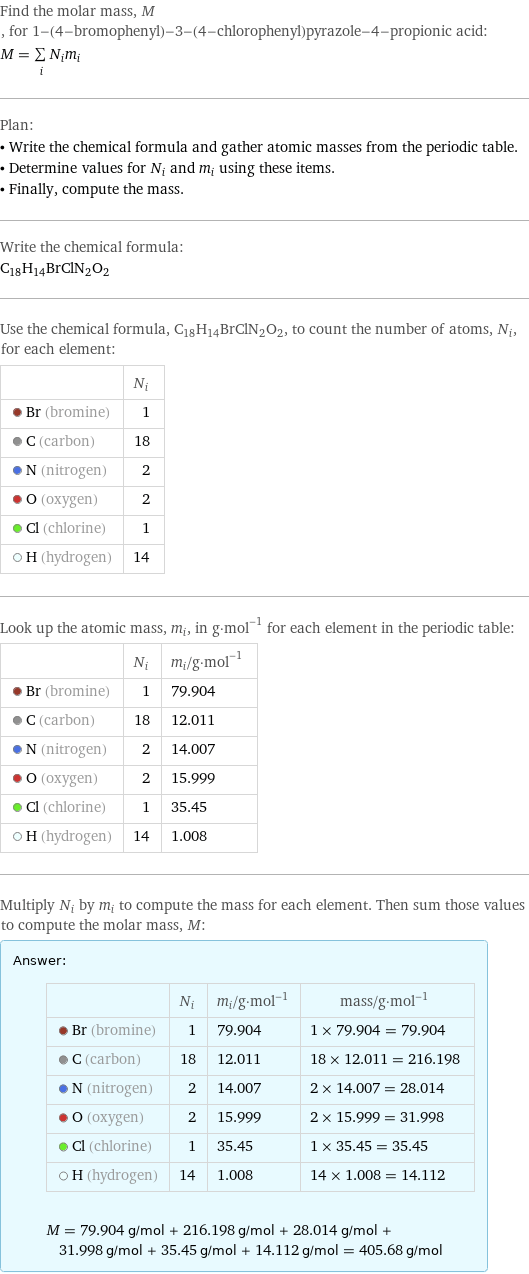Input interpretation

1-(4-bromophenyl)-3-(4-chlorophenyl)pyrazole-4-propionic acid | molar mass
Result

Find the molar mass, M, for 1-(4-bromophenyl)-3-(4-chlorophenyl)pyrazole-4-propionic acid: M = sum _iN_im_i Plan: • Write the chemical formula and gather atomic masses from the periodic table. • Determine values for N_i and m_i using these items. • Finally, compute the mass. Write the chemical formula: C_18H_14BrClN_2O_2 Use the chemical formula, C_18H_14BrClN_2O_2, to count the number of atoms, N_i, for each element: | N_i Br (bromine) | 1 C (carbon) | 18 N (nitrogen) | 2 O (oxygen) | 2 Cl (chlorine) | 1 H (hydrogen) | 14 Look up the atomic mass, m_i, in g·mol^(-1) for each element in the periodic table: | N_i | m_i/g·mol^(-1) Br (bromine) | 1 | 79.904 C (carbon) | 18 | 12.011 N (nitrogen) | 2 | 14.007 O (oxygen) | 2 | 15.999 Cl (chlorine) | 1 | 35.45 H (hydrogen) | 14 | 1.008 Multiply N_i by m_i to compute the mass for each element. Then sum those values to compute the molar mass, M: Answer: | | | N_i | m_i/g·mol^(-1) | mass/g·mol^(-1) Br (bromine) | 1 | 79.904 | 1 × 79.904 = 79.904 C (carbon) | 18 | 12.011 | 18 × 12.011 = 216.198 N (nitrogen) | 2 | 14.007 | 2 × 14.007 = 28.014 O (oxygen) | 2 | 15.999 | 2 × 15.999 = 31.998 Cl (chlorine) | 1 | 35.45 | 1 × 35.45 = 35.45 H (hydrogen) | 14 | 1.008 | 14 × 1.008 = 14.112 M = 79.904 g/mol + 216.198 g/mol + 28.014 g/mol + 31.998 g/mol + 35.45 g/mol + 14.112 g/mol = 405.68 g/mol